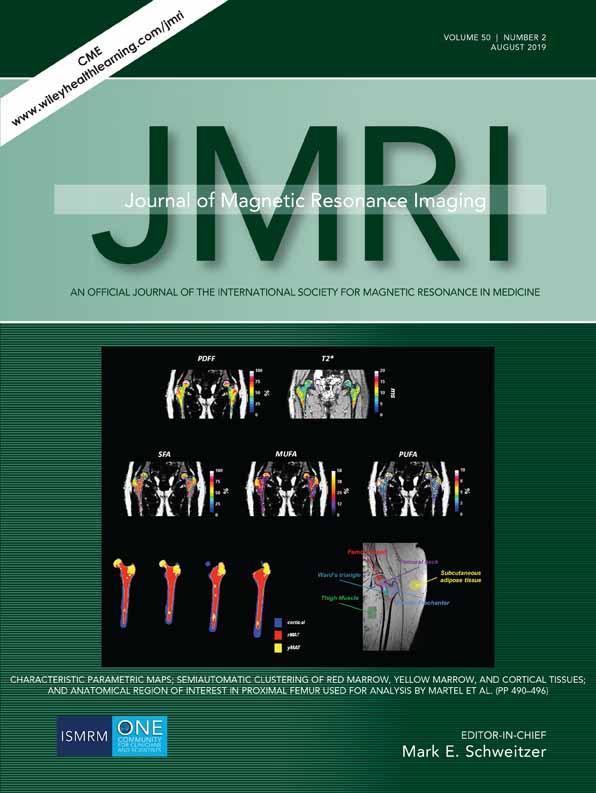23Na Triple-quantum signal of in vitro human liver cells, liposomes, and nanoparticles: Cell viability assessment vs. separation of intra- and extracellular signal
Abstract
Background
Triple-quantum (TQ) filtered sequences have become more popular in sodium MR due to the increased usage of scanners with field strengths exceeding 3T. Disagreement as to whether TQ signal can provide separation of intra- and extracellular compartments persists.
Purpose
To provide insight into TQ signal behavior on a cellular level.
Study Type
Prospective.
Phantom/Specimen
Cell-phantoms in the form of liposomes, encapsulated 0 mM, 145 mM, 154 mM Na+ in a double-lipid membrane similar to cells. Poly(lactic-co-glycolic acid) nanoparticles encapsulated 154 mM Na+ within a single-layer membrane structure. Two microcavity chips with each 6 × 106 human HEP G2 liver cells were measured in an MR-compatible bioreactor.
Field Strength/Sequence
Spectroscopic TQ sequence with time proportional phase-increments at 9.4T.
Assessment
The TQ signal of viable, dead cells, and cell-phantoms was assessed by a fit in the time domain and by the amplitude in the frequency domain.
Statistical Tests
The noise variance (σ) was evaluated to express the deviation of the measured TQ signal amplitude from noise.
Results
TQ signal >20σ was found for liposomes encapsulating sodium ions. Liposomal encapsulation of 0 mM Na+ and 154 mM Na+ encapsulation in the nanoparticles resulted in <2σ TQ signal. Cells under normal perfusion resulted in >9σ TQ signal. Compared with TQ signal under normal perfusion, a 56% lower TQ signal of was observed (25σ) during perfusion stop. TQ signal returned to 92% of the initial signal after reperfusion.
Data Conclusion
Our measurements indicate that TQ signal in liposomes was observed due to the trapping of ions within the double-lipid membrane rather than from the intraliposomal space. Transfer to the cell results suggests that TQ signal was observed from motion restriction equivalent to trapping.
Level of Evidence: 1
Technical Efficacy: Stage 3
J. Magn. Reson. Imaging 2019;50:435–444.




